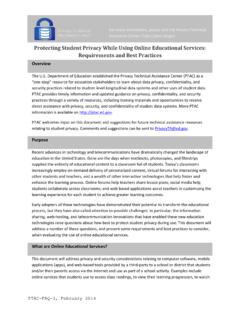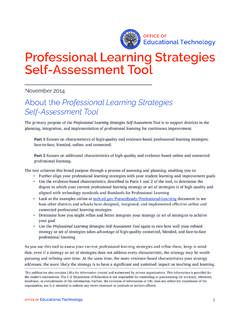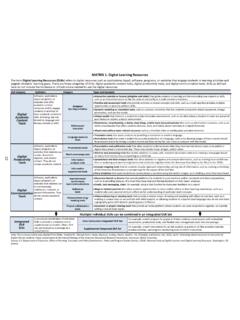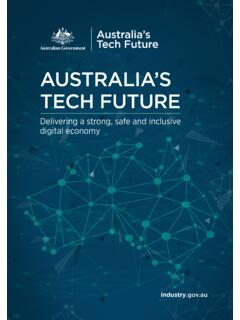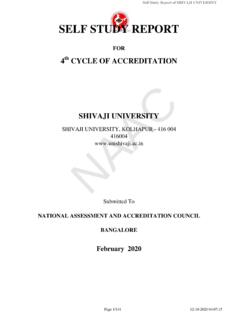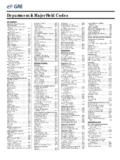Transcription of Enhancing Teaching and Learning Through Educational Data ...
1 Enhancing Teaching and Learning Through Educational data mining and Learning analytics : An Issue Brief Enhancing Teaching and Learning Through Educational data mining and Learning analytics : An Issue Brief Department of Education Office of Educational Technology Prepared by: Marie Bienkowski Mingyu Feng Barbara Means Center for Technology in Learning SRI International October 2012 This report was prepared for the Department of Education under Contract Number ED-04-CO-0040, Task 0010, with SRI International. The views expressed herein do not necessarily represent the positions or policies of the Department of Education.
2 No official endorsement by the Department of Education is intended or should be inferred. Department of Education Arne Duncan Secretary Office of Educational Technology Karen Cator Director October 2012 This report is in the public domain. Authorization to reproduce this report in whole or in part is granted. While permission to reprint this publication is not necessary, the suggested citation is: Department of Education, Office of Educational Technology, Enhancing Teaching and Learning Through Educational data mining and Learning analytics : An Issue Brief, Washington, , 2012. This report is available on the Department s Web site at On request, this publication is available in alternate formats, such as Braille, large print, or compact disc.
3 For more information, please contact the Department s Alternate Format Center at (202) 260-0852 or (202) 260-0818. Technical Contact Bernadette Adams iii Contents List of Exhibits .. iv Acknowledgments .. v Executive Summary .. vii Introduction .. 1 Personalized Learning Scenarios .. 5 data mining and analytics : The Research Base .. 7 Educational data mining .. 9 Learning analytics .. 13 Visual data analytics .. 15 data Use in Adaptive Learning Systems .. 17 Educational data mining and Learning analytics Applications .. 25 User Knowledge Modeling .. 28 User Behavior Modeling .. 29 User Experience Modeling .. 30 User Profiling.
4 32 Domain Modeling .. 33 Learning System Components and Instructional Principle Analysis .. 34 Trend Analysis .. 35 Adaptation and Personalization .. 35 Implementation Challenges and Considerations .. 37 Technical Challenges .. 38 Limitations in Institutional Capacity .. 40 Privacy and Ethics Issues .. 41 Recommendations .. 45 Educators .. 46 Researchers and Developers .. 49 Collaborations Across Sectors .. 50 Conclusion .. 51 References .. 53 Selected Reading .. 59 Selected Websites .. 63 iv Exhibits Exhibit 1. The Components and data Flow Through a Typical Adaptive Learning System .. 18 Exhibit 2. Student Dashboard Showing Recommended Next Activities.
5 19 Exhibit 3. Teacher Dashboard With Skill Meter for Math Class .. 20 Exhibit 4. Administrator Dashboard Showing Concept Proficiency for a Grade Level .. 21 Exhibit 5 Application Areas for Educational data mining and Learning analytics .. 26 v Acknowledgments This issue brief was developed under the guidance of Karen Cator and Bernadette Adams of the Department of Education, Office of Educational Technology. At SRI International, Marianne Bakia provided advice and insightful feedback on drafts of the report. Yukie Toyama (now at the University of California, Berkeley) provided research assistance. The report was edited by Mimi Campbell.
6 Kate Borelli produced graphics and layout, assisted by Vickie Watts and Yesica Lopez. The authors incorporated many of the thoughts and experiences of the experts interviewed for this report, Linda Chaput (Agile Mind, Inc.), Michael Freed and Dror Oren (SRI International), David Gutelius (Jive Software), Michael Jahrer and Andreas Toescher (Commendo Inc., Austria), Phill Miller (Moodlerooms, Inc.), Jeff Murphy (Florida Virtual School), Peter Norvig (Google Inc.), Sunil Noronha (Yahoo! Research Labs), Ken Rudin (Zynga, Inc.), Steve Ritter (Carnegie Learning , Inc.), Bror Saxberg and David Niemi (Kaplan, Inc.), Shelby Sanders (Onsophic, Inc.)
7 , and Charles Severance (University of Michigan and Sakai, Inc.). The authors are grateful for the deliberations of our technical working group (TWG) of academic experts in Educational data mining and Learning analytics . These experts provided constructive guidance and comments for this issue brief. The TWG comprised Ryan S. J. d. Baker (Worcester Polytechnic Institute), Gautam Biswas (Vanderbilt University), John Campbell (Purdue University), Greg Chung (National Center for Research on Evaluation, Standards, and Student Testing, University of California, Los Angeles), Alfred Kobsa (University of California, Irvine), Kenneth Koedinger (Carnegie Mellon University), George Siemens (Technology Enhanced Knowledge Research Institute, Athabasca University, Canada), and Stephanie Teasley (University of Michigan).
8 Vi vii Executive Summary In data mining and data analytics , tools and techniques once confined to research laboratories are being adopted by forward-looking industries to generate business intelligence for improving decision making. Higher education institutions are beginning to use analytics for improving the services they provide and for increasing student grades and retention. The Department of Education s National Education Technology Plan, as one part of its model for 21st-century Learning powered by technology, envisions ways of using data from online Learning systems to improve instruction. With analytics and data mining experiments in education starting to proliferate, sorting out fact from fiction and identifying research possibilities and practical applications are not easy.
9 This issue brief is intended to help policymakers and administrators understand how analytics and data mining have been and can be applied for Educational improvement. At present, Educational data mining tends to focus on developing new tools for discovering patterns in data . These patterns are generally about the microconcepts involved in Learning : one-digit multiplication, subtraction with carries, and so on. Learning analytics at least as it is currently contrasted with data mining focuses on applying tools and techniques at larger scales, such as in courses and at schools and postsecondary institutions. But both disciplines work with patterns and prediction: If we can discern the pattern in the data and make sense of what is happening, we can predict what should come next and take the appropriate action.
10 Educational data mining and Learning analytics are used to research and build models in several areas that can influence online Learning systems. One area is user modeling, which encompasses what a learner knows, what a learner s behavior and motivation are, what the user experience is like, and how satisfied users are with online Learning . At the simplest level, analytics can detect when a student in an online course is going astray and nudge him or her on to a course correction. At the most complex, they hold promise of detecting boredom from patterns of key clicks and redirecting the student s attention. Because these data are gathered in real time, there is a real possibility of continuous improvement via multiple feedback loops that operate at different time scales immediate to the student for the next problem, daily to the teacher for the viii next day s Teaching , monthly to the principal for judging progress, and annually to the district and state administrators for overall school improvement.

